In Serie A, Juventus ranks second after playing 12 matches and accumulating 29 points, trailing by a narrow margin of two points from the top-ranked Inter, who has 31 points. Given the team’s turbulent situation in the previous season, this constitutes a relatively satisfactory beginning due to sanctions and point deductions.
Juventus’ defence is good this season, and we all know that as they conceded only seven goals in 12 matches, making them the second-best defensive line in Serie A after Inter, who occupies first place and conceded only six goals. However, an essential factor that puts them in second place in an excellent position to compete besides their defence is their reliance on set-pieces to threaten the opponents’ goal.
Juventus are the best in almost everything in the attacking set-pieces in Serie A, as they are the team that scored the most goals from set-pieces with five goals and have the best xG from set-pieces with 5.60 and the most goals from corners with four goals, with Frosinone, Genoa and Atalanta. It is enough to know that they have scored 19 goals in Serie A, which means that more than 26% of their goals are from set-pieces.
In this tactical analysis, we will discuss the different tactics of Massimiliano Allegri’s team in attacking corners and how they are diverse and effective.
Overloading
They prefer to make most or all of their attackers stand together in a pack on the far post near the penalty spot depending on many different principles that they will rely on later: overloading, underloading and freeing players, so let’s start with overloading.
In the first photo below, the opponent defends with four players in the first zonal line: a short-option defender, a player to defend the rebound and four man-markers.
In the second photo, they aim to target the space between the last two zonal defenders by their best four attackers overloading this area to increase the possibility of getting the first touch while asking an attacker to move toward the near post to drag his man with him.
In the third photo, the plan works, and one of the attackers gets the cross, but the shot goes above the crossbar, as shown in the fourth photo.
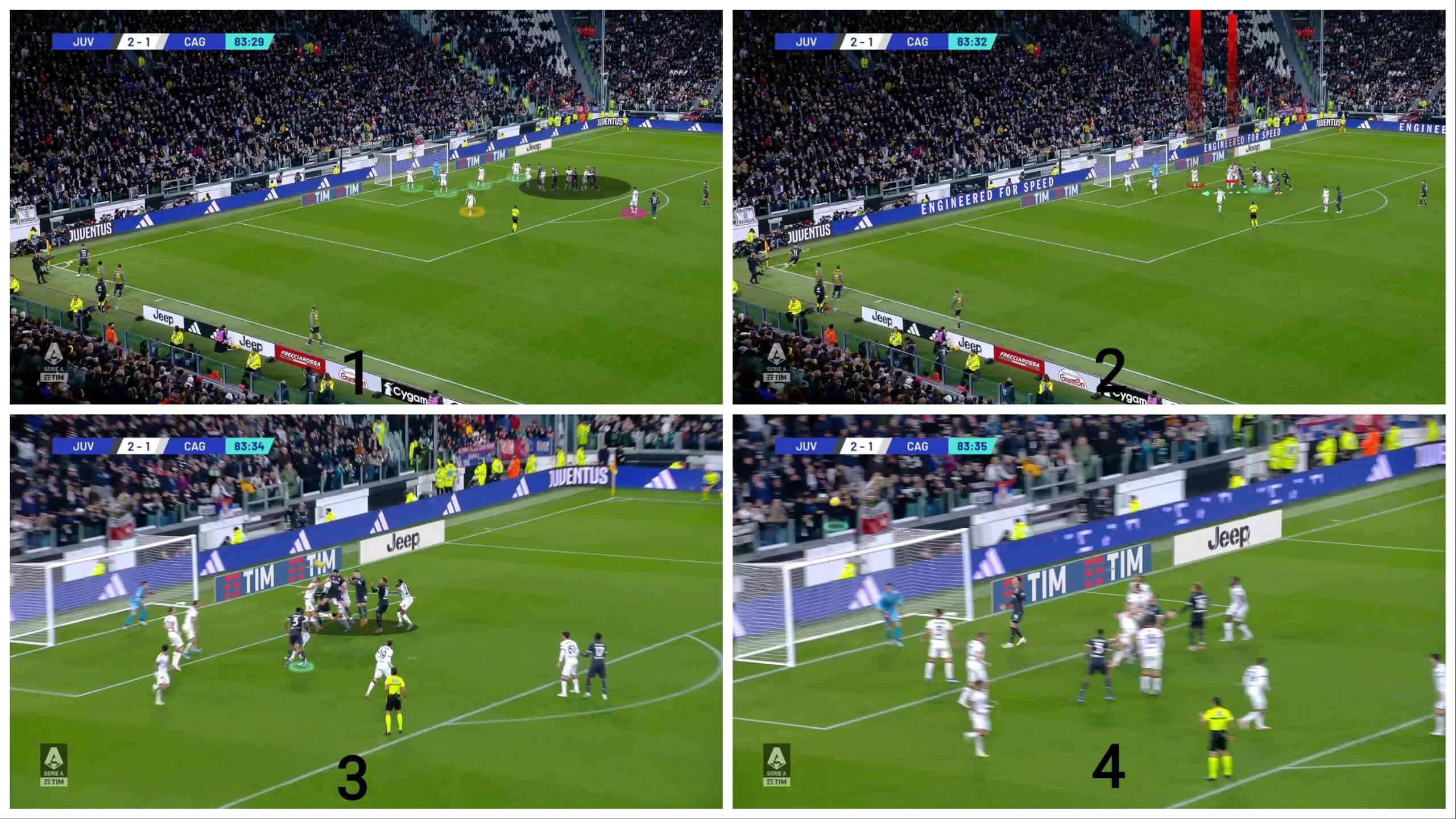
Underloading
In some cases, like the previous case, maybe the attacker couldn’t direct the ball well because he jumped among too many defenders, so they also used a counter idea, which is underloading; so we will explain it in the following case.
In the first photo, the opponent defends with five players in the first zonal line, four players in the second zonal line and a short-option defender, so their idea is to move toward the near post, dragging and blocking the defenders who can go to chase the ball into the targeted area, where they have started, leaving only one or more attackers to be the targeted players. Let’s explain in detail.
In the second photo, they start near each other in the usual pack, and then, two attackers move to block the last two second-zone defenders, highlighted in yellow and green; an attacker, in pink, goes to block the second last defender in the first zonal line, who is nearer to go out to chase the ball. Two targeted players are still in their positions, waiting to step forward as the blocks are done, as in the third photo, and the plan works in the fourth photo.
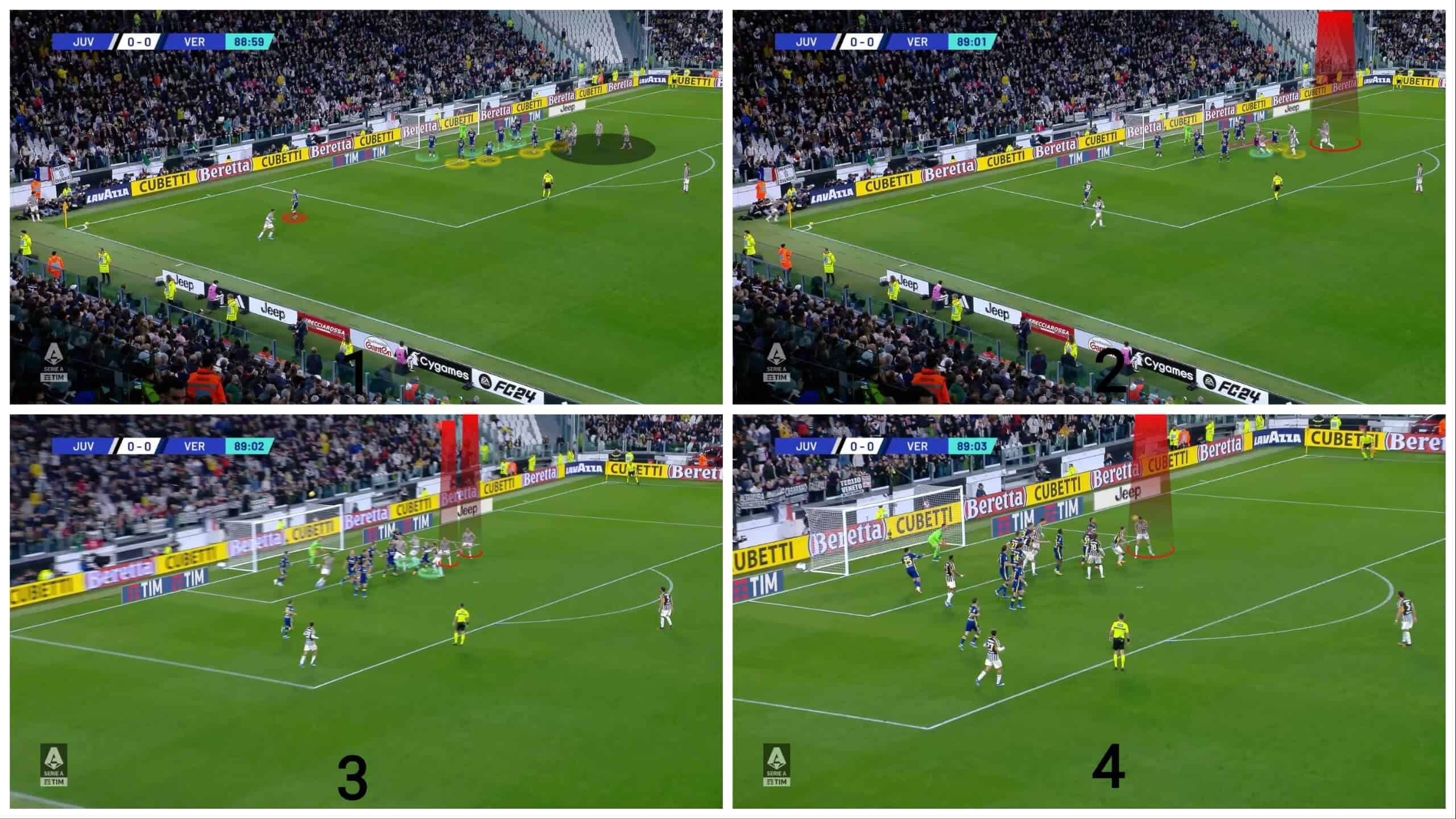
But the goalkeeper saves the ball, as shown below.
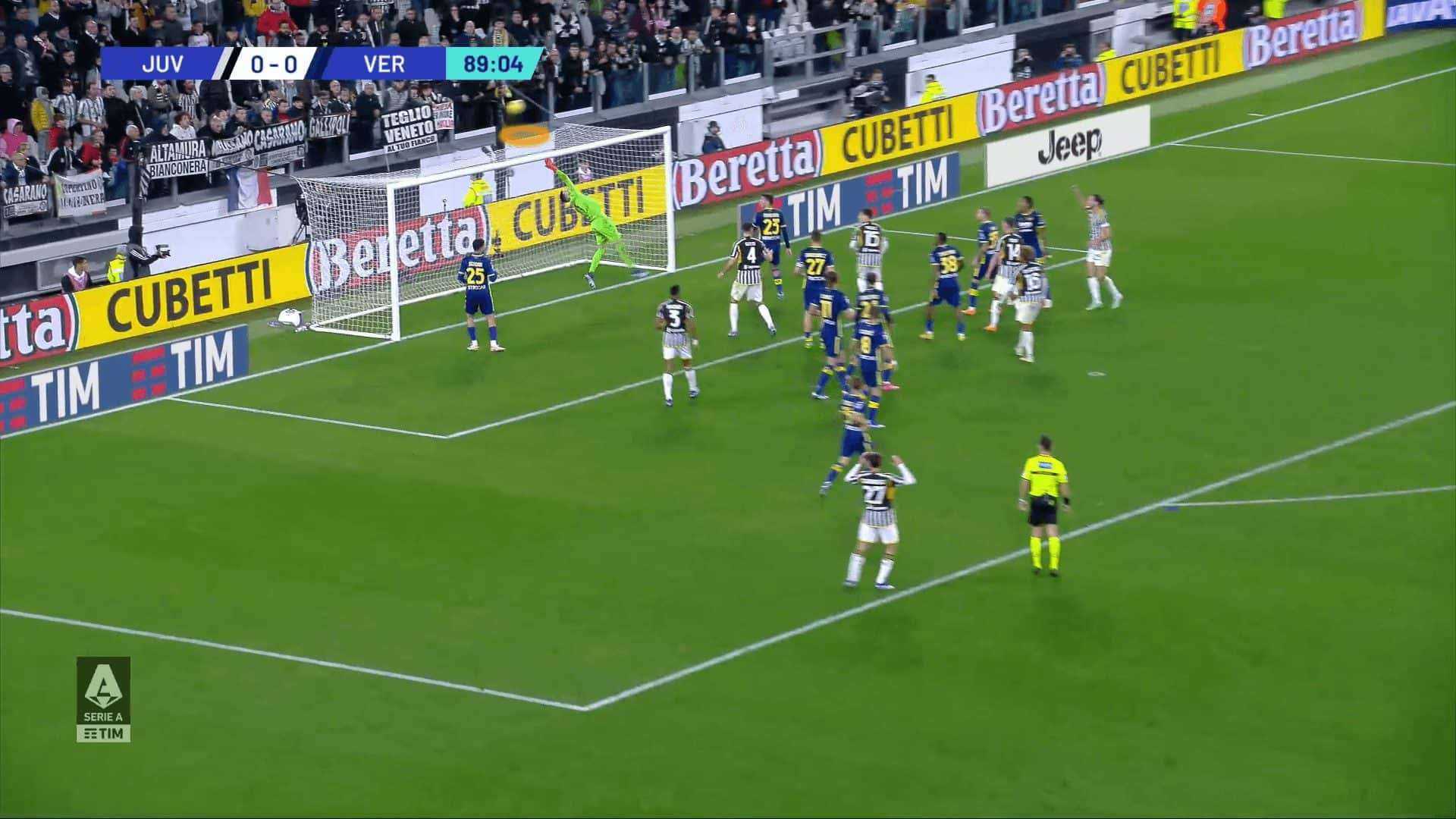
They also have another plan depending on underloading, but this time, the first targeted player nods the ball to a nearer area to make sure that the headed shot will threaten the ball more and more, so let’s take a case from their match against S.S. Lazio.
In the first photo below, Maurizio Sarri’s team defends with five players in the first zonal line, who stand in this shape against any out-swinging cross because their path is inclined to the outside, three players in the second zonal line, a player to defend the short corner and a player to take the rebound.
In the second photo, the same idea of underloading appears, so three players move to the near post to take the attention of the second zonal line, especially the last one, leaving only the targeted player in ample space, as shown in the third photo.
In the fourth photo, the second part of the plan appears, which is the movement of two players, in pink, behind the first zonal line to take the headed pass, exploiting that the defenders focus on the ball while they can’t track the ball and them at the same time which is called an orientation problem.
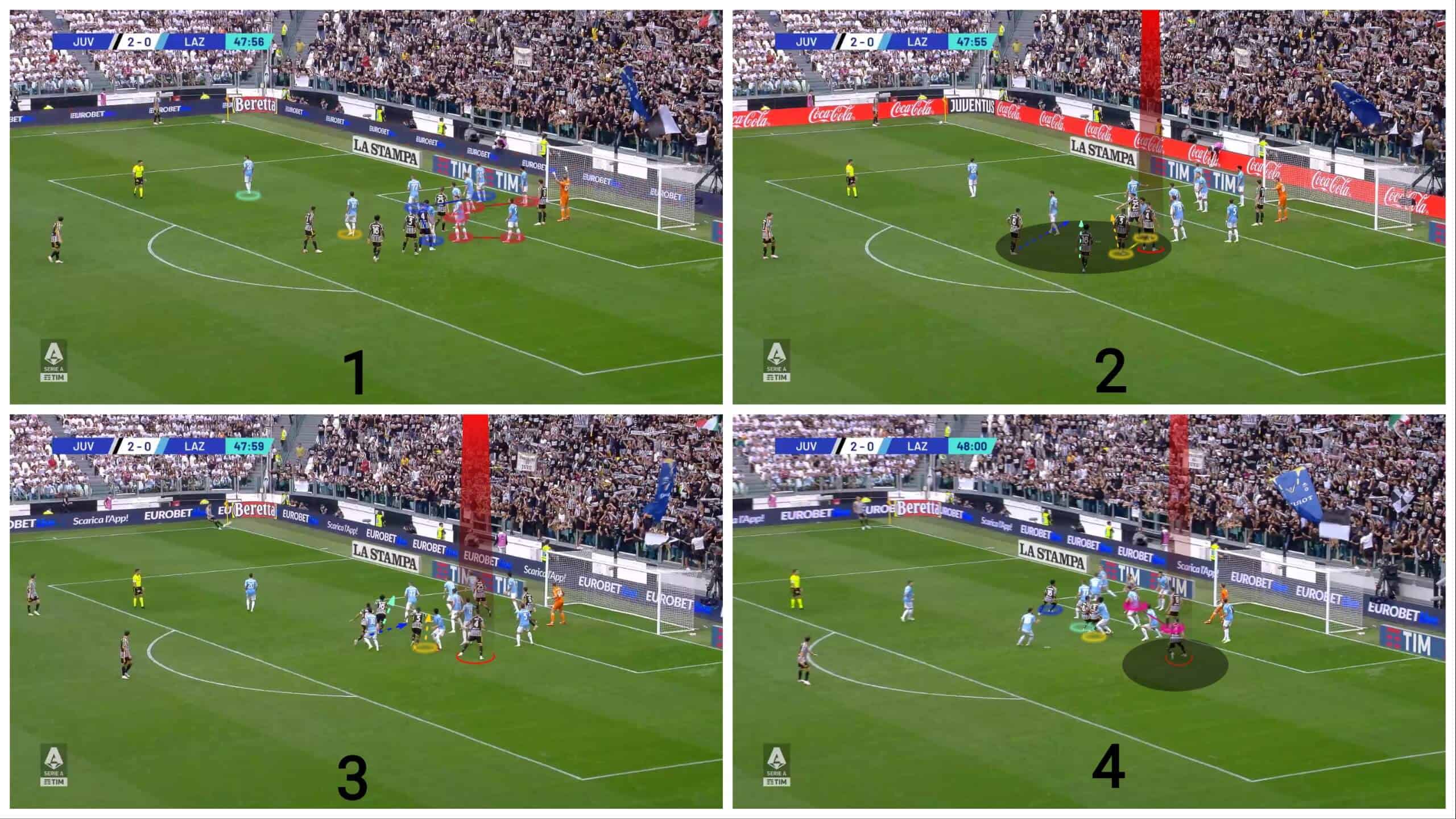
The first part of the plan works in the photo below, where the first targeted player easily wins the aerial duel with the last player of the second zonal line because he comes late, jumping with his back.
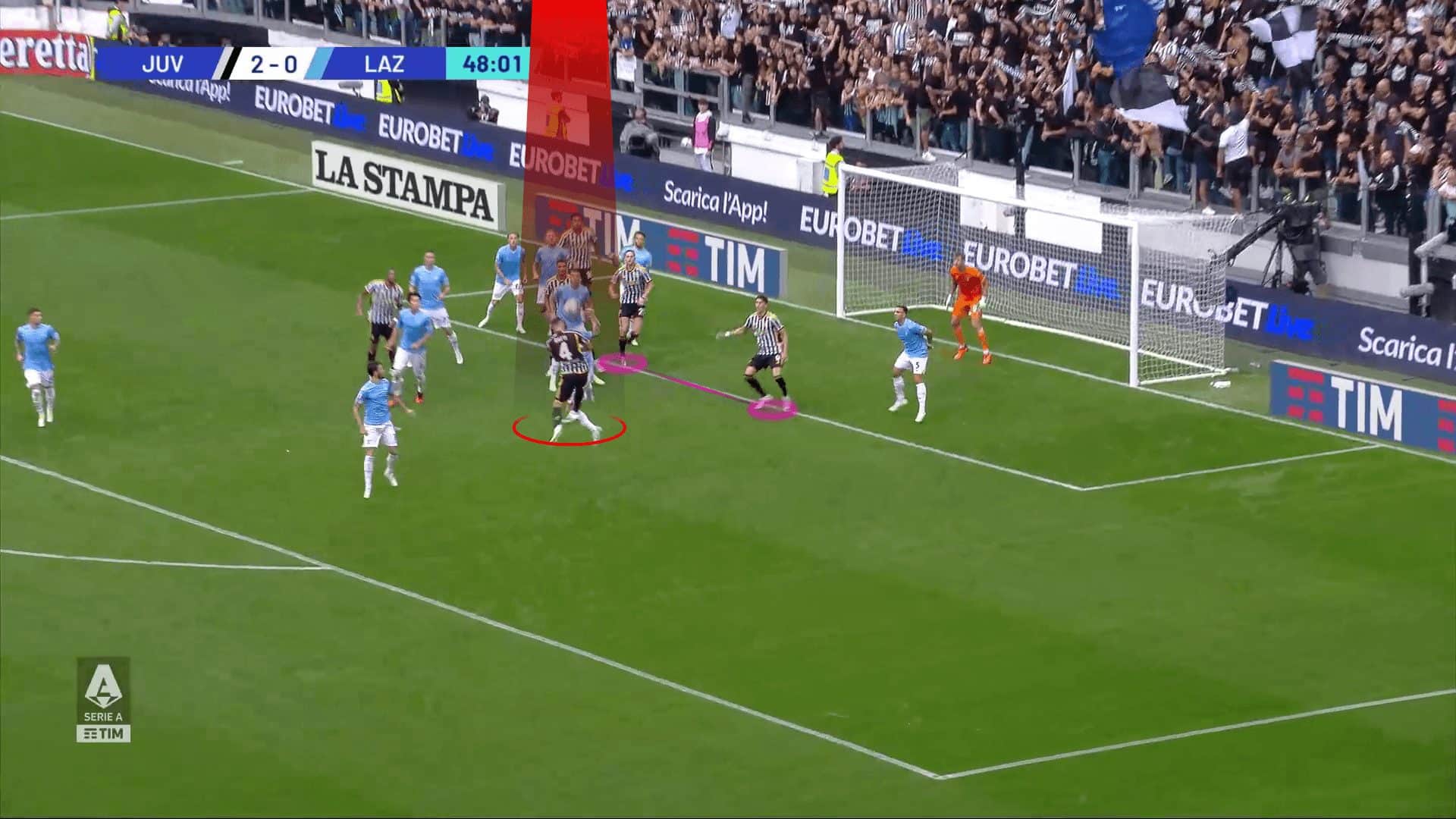
And then the second part of the plan works because of the orientation problem we have mentioned above, as shown below.
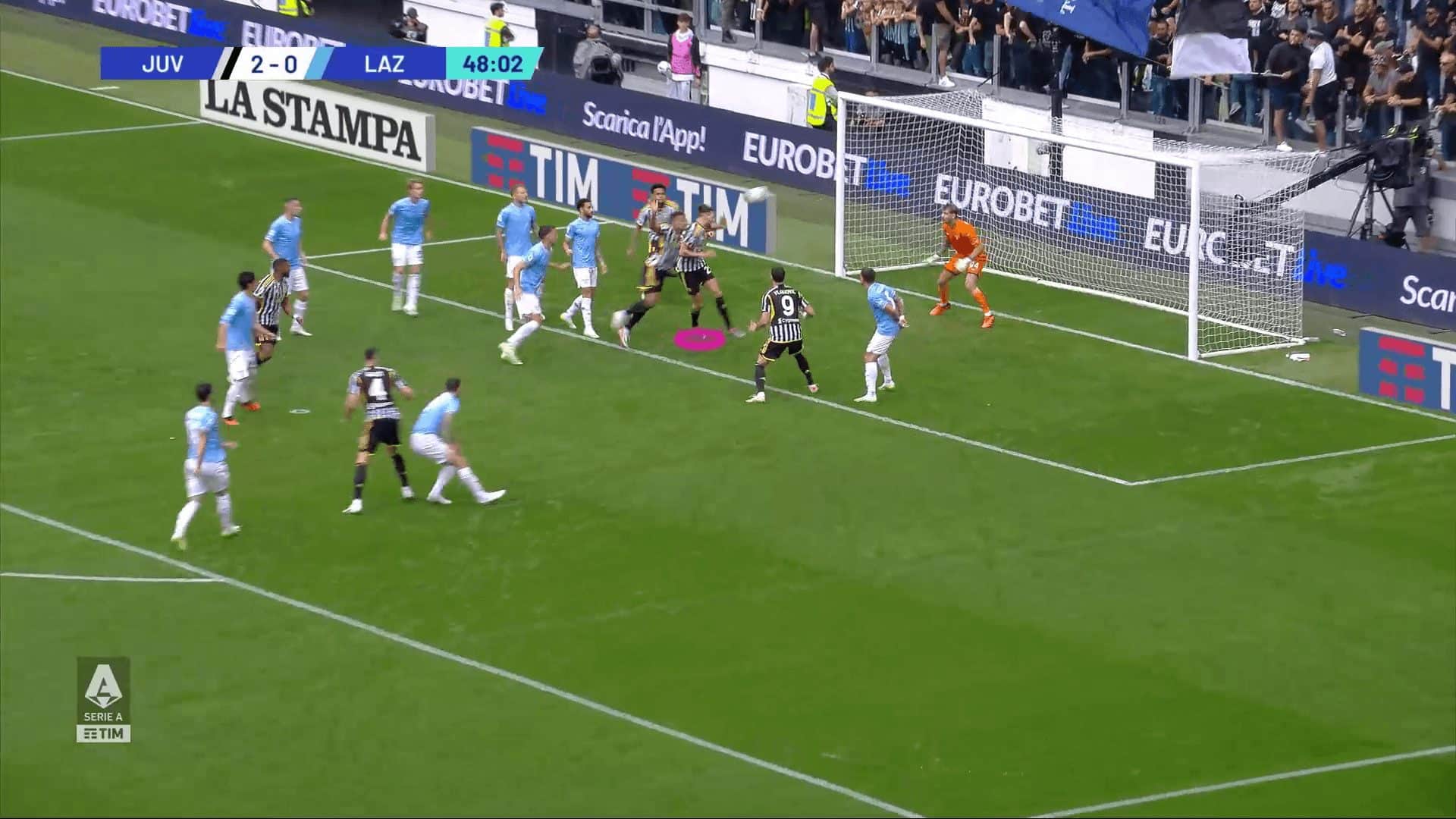
But the goalkeeper saves the ball, as shown below.
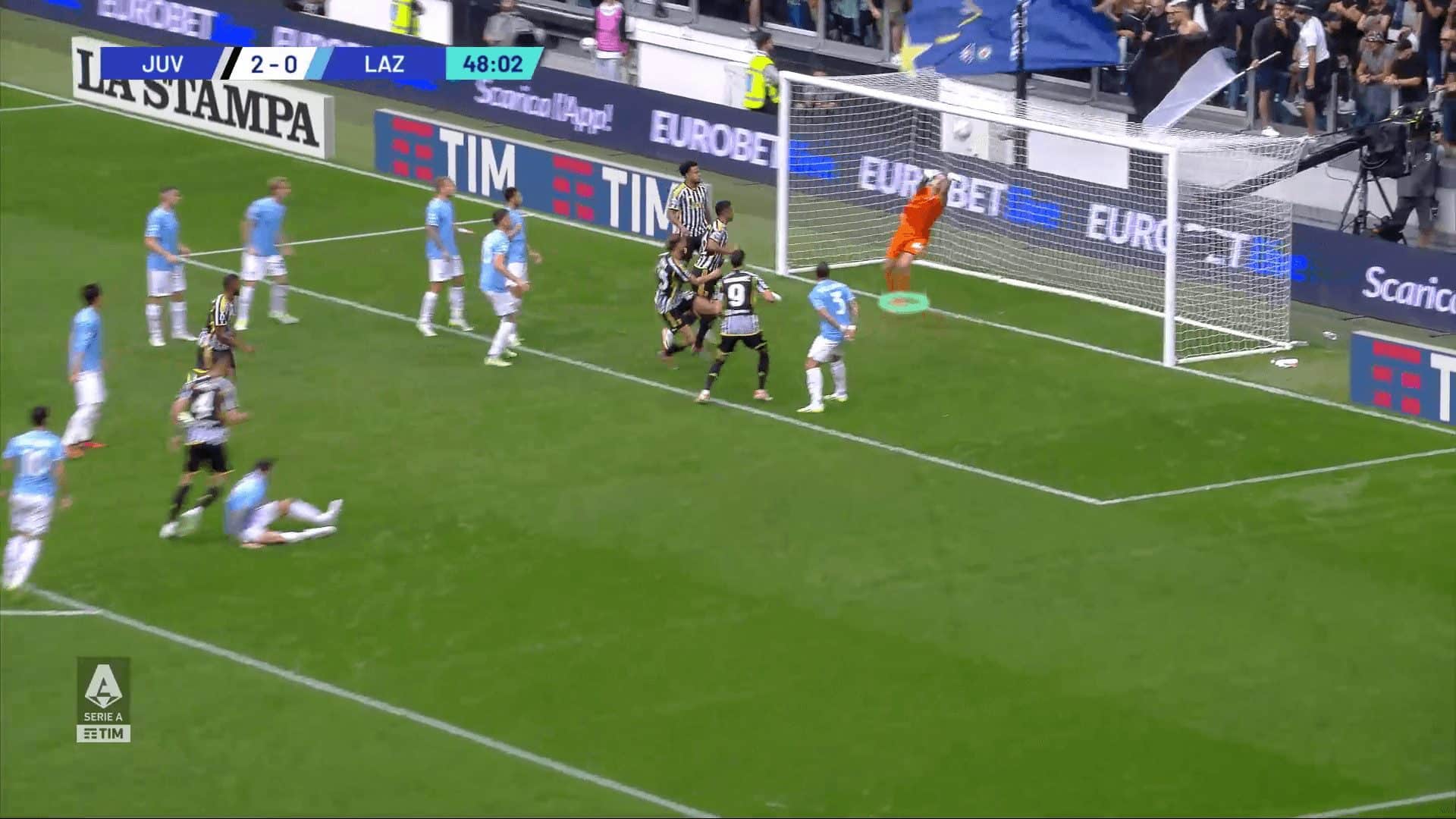
Free two or more players
In this idea, they simply use their free attackers from man markers, one to free space and the others to exploit it. Let’s explain in detail.
In the first photo, the opponent defends with four players in the first zonal line, including the near-post defender, a short-option defender, a defender to defend the rebound zone and three man-markers, but one of them is dragged to leave his position to help in the short area because Juventus use two short-option players. Then the routine begins because now they have two free attackers.
In the second photo, this man marker tries to return after the taker’s sign. Still, he is late because the first attacker moves to the area before the near post to drag the zonal defender and the other moves behind him in the area the defender has left, as shown in the third photo. Still, the near-post defender fills this gap at the last moment, as shown in the fourth photo.
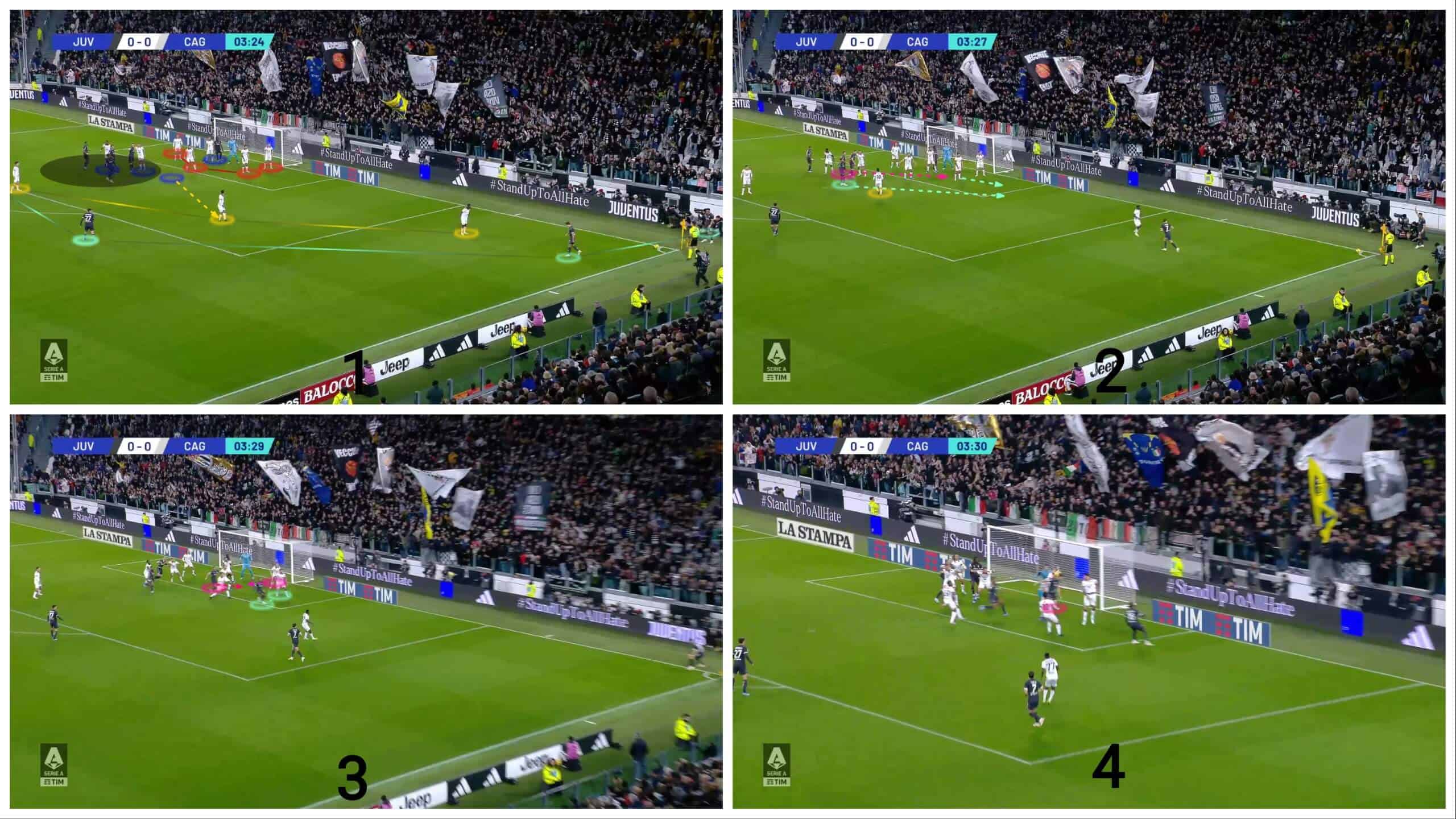
Short corners
They also have deceptive ideas in short corners. One of them is to start without short options, and then Federico Chiesa moves suddenly in this large space, as shown in the first photo below. You may notice that there is no numerical superiority in the second photo, but in that large space, Chiesa has qualitative superiority because he can easily dribble inside the box, as shown in the third photo.
In the third photo, the second part of the plan is to exploit that the defenders give all of their attention to the ball with Chiesa so they can track him with the ball and the two attackers who move behind them at the same time; the same orientation problem we have mentioned above, as shown in the fourth photo.
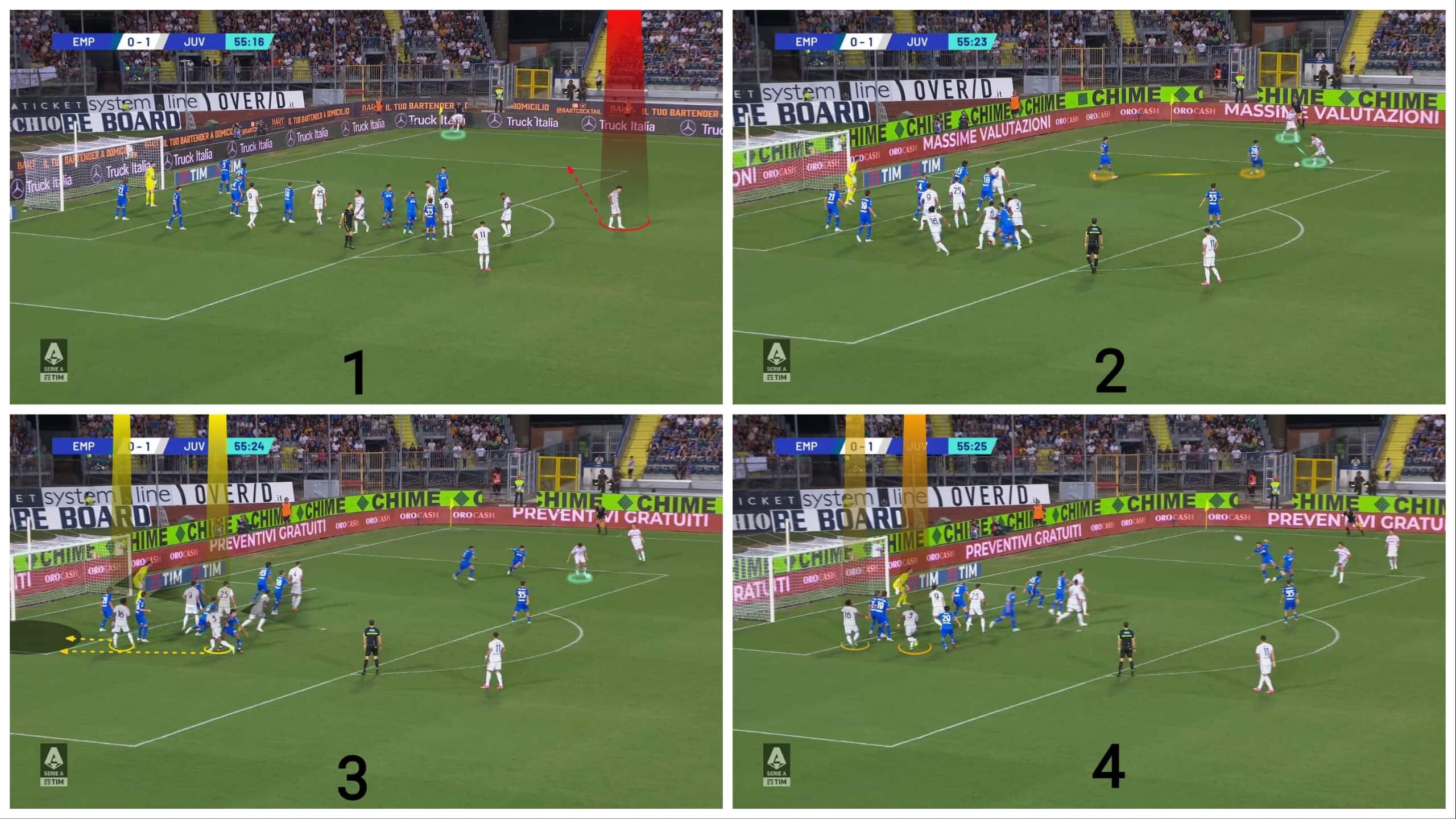
The plan works, but the cross is a little powerful, so the ball hits the net from the outside, as shown below.
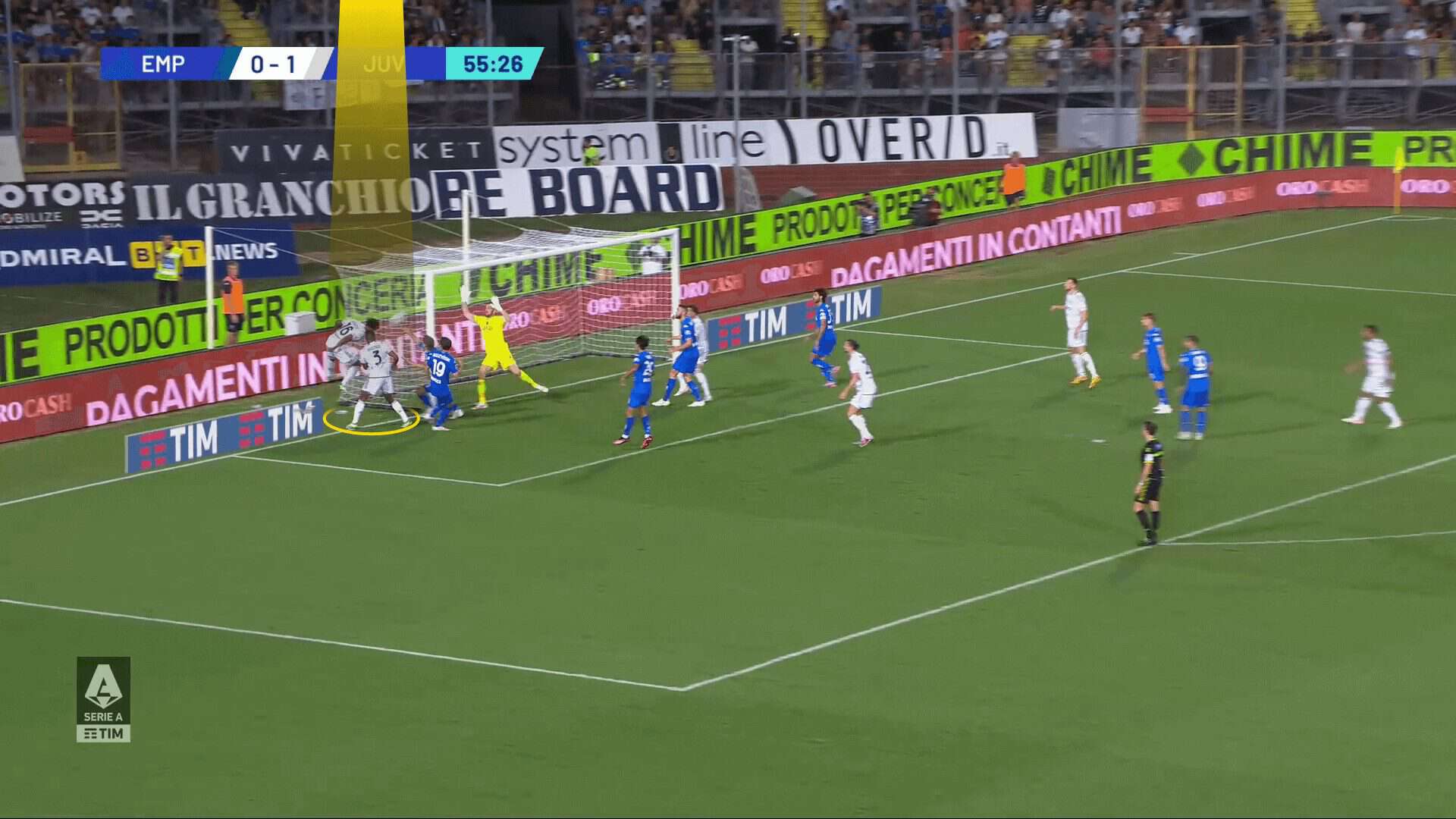
They sometimes use numerical superiority in the short area, as shown in the first three photos below, where the defender chooses to move toward Federico Chiesa. Hence, the taker easily passes the ball to the other one, but to ensure that the situation remains 3-v-1, a player stands with the rebound defender dragging him inside. In contrast, as shown in the fourth photo, another attacker moves to the near post to take the defenders’ attention there, preventing them from stepping out to help.
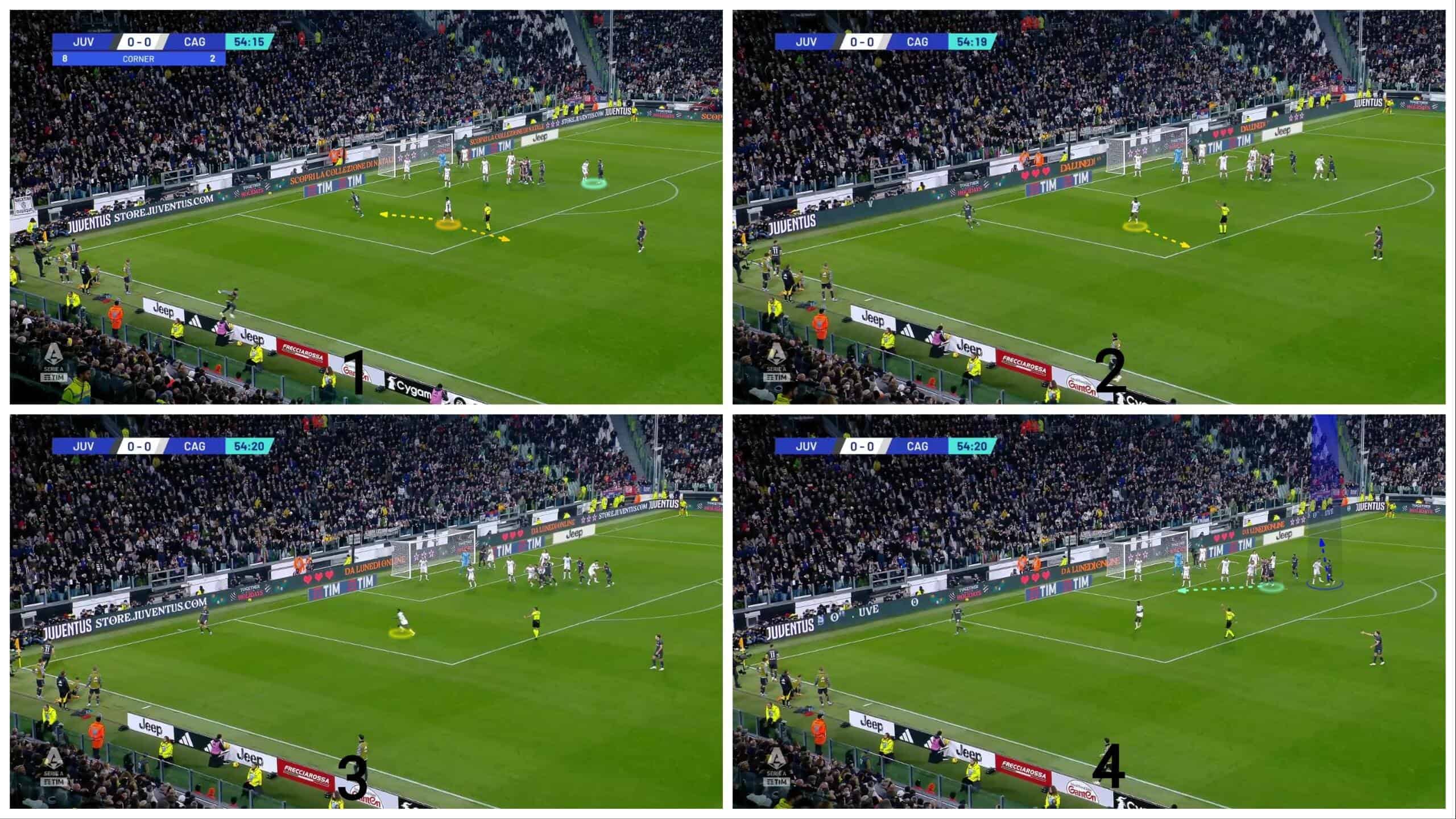
Here, the second part of the plan begins, so the blue attacker returns to defend the rebound after doing his job while the green attacker is still there after doing his first job to take the defenders’ attention away from the two attackers who stand on the blind side of the defenders. It works, but the ball goes next to the post.
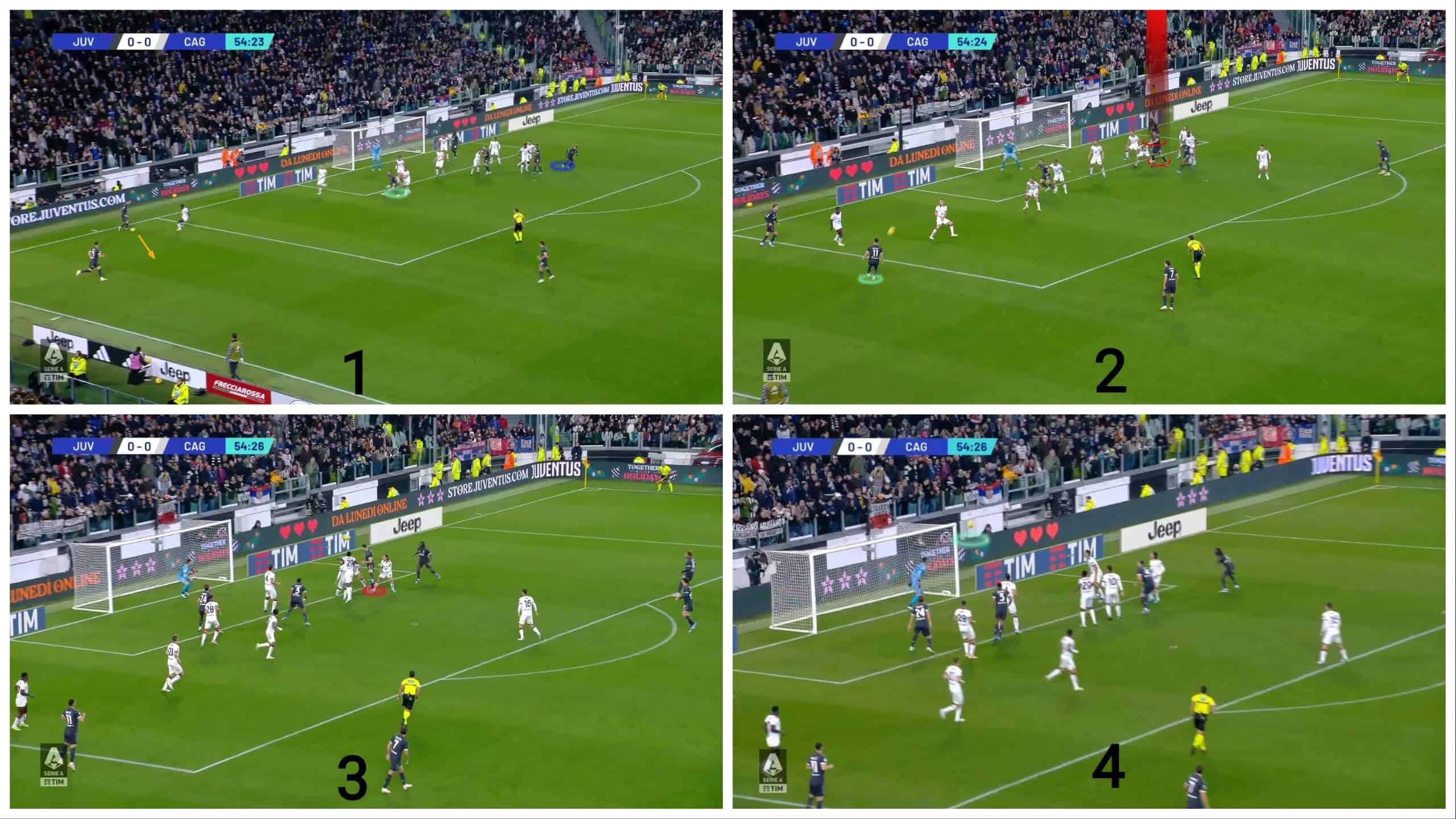
They also use the same numerical superiority we have mentioned above but with a different way to target the rebound zone directly, as we will explain in the case below.
In the first photo below, Federico Chiesa takes the attention of the short-option defender. At the same time, another player in red fixes the rebound defender inside the box. The green player does the same important role we have mentioned above to move in front of the defenders on the near post who can go up to help and fix them, so the targeted area is empty, as shown in the second photo.
In the third photo, the plan works, so the attacker shoots from a good area, but the goalkeeper saves the ball, as shown in the fourth photo.
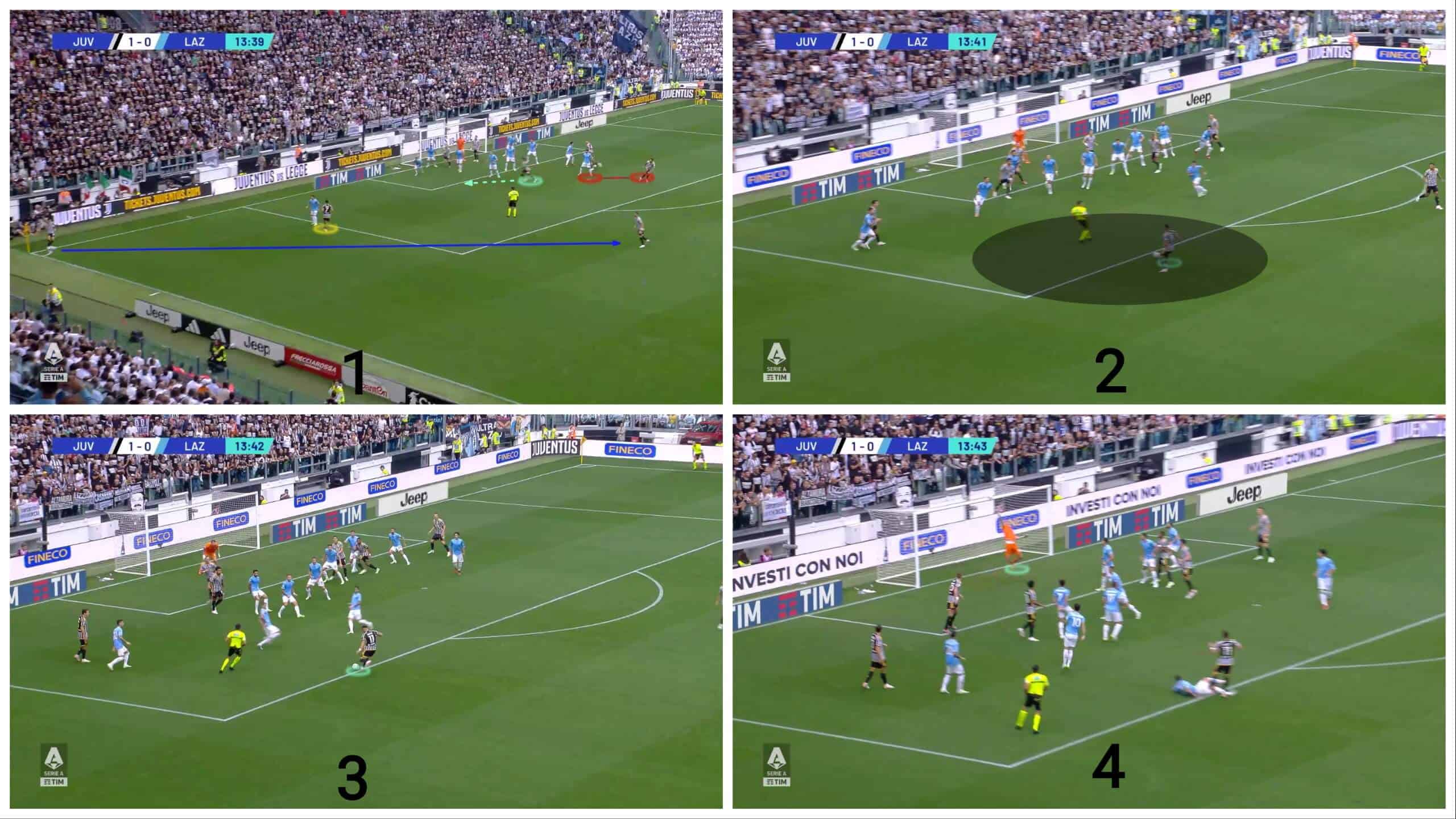
Conclusion
In this analysis, we have demonstrated the extent of Juventus’ dependence on set-pieces, especially corners, which could be an influential factor in the title race or at least the return to the UEFA Champions League.
In this set-piece analysis, we have clarified their use of different strategies in attacking corners: overloading, underloading, freeing two or more players, and short corners.

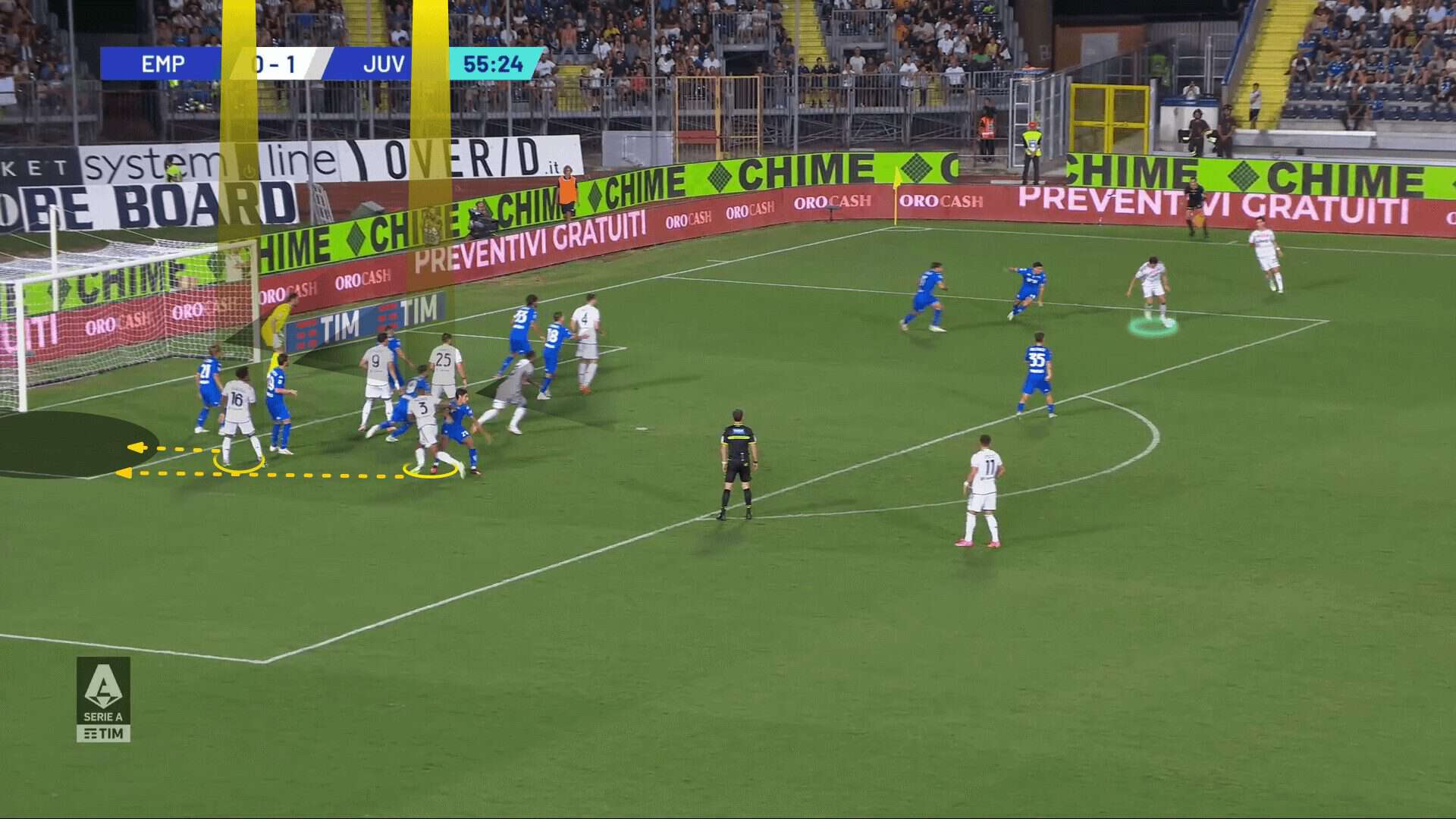




Comments